Humans have been cultivating and harvesting anise (Pimpinella anisum) for thousands of years, and for good reason.
Aside from its medicinal value, this aromatic annual herb adds a dimensional licorice flavor to sweets, baked goods, savory dishes, and drinks. From traditional to modern, the culinary uses are endless.
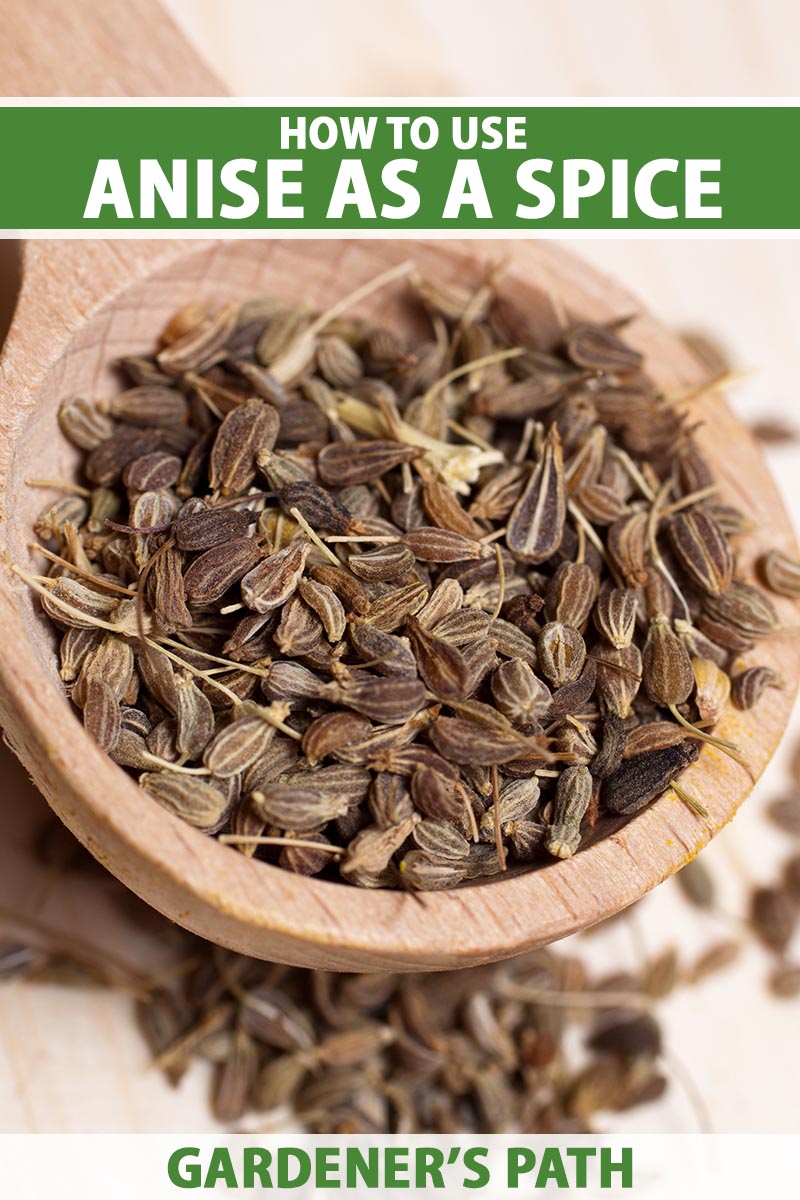
We link to vendors to help you find relevant products. If you buy from one of our links, we may earn a commission.
I’m Scandinavian, so I’m a bit of a black licorice connoisseur. You could say it’s the flavor of my people. I’m particularly partial to Swedish aquavit, ice cold from the freezer, for sipping after dinner.
If you love the taste of black licorice as much as I do, then you’ll like this article. Here’s what you’ll learn about anise:
What You’ll Learn
Now that you’ve got an idea of what I’ll be covering, let’s jump into it.
What Is Anise?
Anise is an annual herb in the Umbelliferae aka Apiaceae family. The plant’s one to two-foot-tall stalks sprout delicate, bright green leaves, topped with bountiful clusters of white, radially symmetrical flowers. These are called umbels.
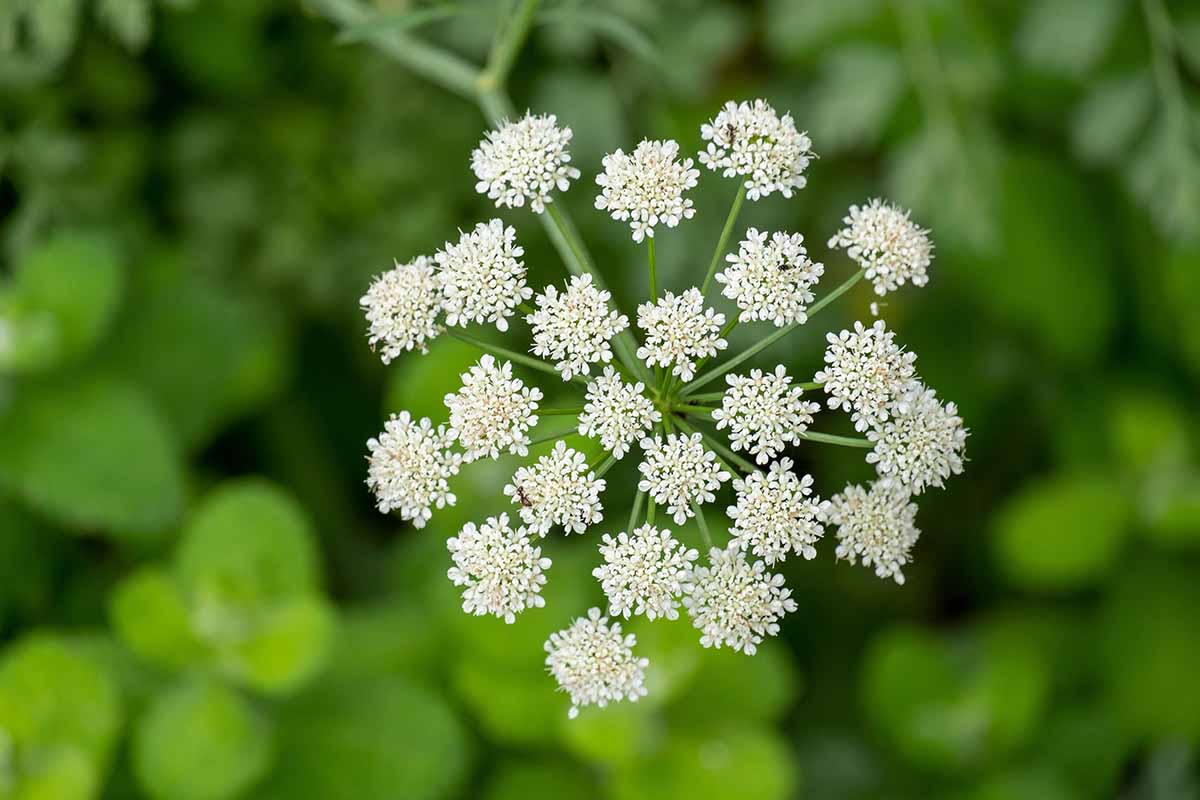
And inside the flowers, little gems are hiding. They’re actually fruits, but we call them seeds. In fact, they’re often referred to as aniseeds.
Before I tell the magical tale of culinary uses for P. anisum, I need to clarify a few things
Because of its name, and its delightful licorice flavor, this herb is sometimes confused with other plants. These are the biggest offenders:
- Anise hyssop (Agastache foeniculum) – This sneaky perpetrator is a member of the mint family.
- Star anise (Illicium verum) – Do not be fooled by this fruit. It’s from a little tree in the magnolia family.
- Fennel (Foeniculum vulgare) – Although a close cousin to P. anisum, this plant is distinctly different.
Now that we’re all on the same page with anise, let’s talk about its use in the culinary world.
Check out our guide for the full story on anise and how to grow it.
Culinary History
This herb has a bewitching culinary past. Here’s why:
Multiple parts of the plant can be used, both leaves and seeds, so it’s highly functional.
It has various medicinal purposes, serving a range of ailments and offering a multitude of health benefits.

And P. anisum is known for its distinct flavor profile, making it a workhorse in the kitchen. This is the focus of this article.
P. anisum is native to the Mediterranean, most likely originating in Egypt or the island of Crete. The “Papyrus Ebers,” an ancient Egyptian medical text written around 1550 BCE, describes the use of anise.
Although the origin of the idea is unclear, this herb is noted by some to have spiritual and magical protective powers.
A quick online search reveals numerous options to purchase anise seeds and oils specifically for enhancing psychic abilities and warding off evil spirits.
Superstitions aside, throughout the years, the popularity of this ancient plant spread far and wide, soon making its way around the world.
Today in North America, we’re keeping the tradition alive through timeless culinary concoctions and new ones with a modern twist.
Where to Buy
Anise is so popular that it’s grown commercially in many countries, so it’s easy to source.
But if you live in Zones 4 to 9, you can grow it yourself. And the harvesting and storage process is rather simple. More on that later.
When purchasing P. anisum seeds, be aware: growing the plants and cooking with the herb are two separate activities, so for success in either realm, make sure you’ve got the right kind of seeds. The main difference lies in the purpose for which the seeds are intended:
Culinary seeds are dried, then packaged and labeled for safe consumption.
Seeds for planting are specifically selected for their viability to germinate successfully into new healthy plants. These packages should include growing instructions.
Seeds for growing can be purchased from online distributors like True Leaf Market.
If you’d like to add anise to your gardens, but want to skip the sowing stage, check with your local nursery or greenhouse for seedlings.
If you want to skip the growing and harvesting process altogether, you can find seeds that are ready to cook with and eat, online from Badia Spices via Amazon or at your local grocery store.

If you’re curious about tasting the leaves, you may be lucky enough to stumble upon freshly harvested stalks at a specialty market.
Harvesting
Want to try harvesting leaves and/or seeds from your own plants?
Fear not! I’ll give you some straightforward, simple tips.
Let’s Start with Leaves
To reap the biggest reward, timing is everything. When deciding when to pick the leaves, you might feel a bit like Goldilocks at first.
Tender, young leaves taste the best but take care, because young plants are sensitive.
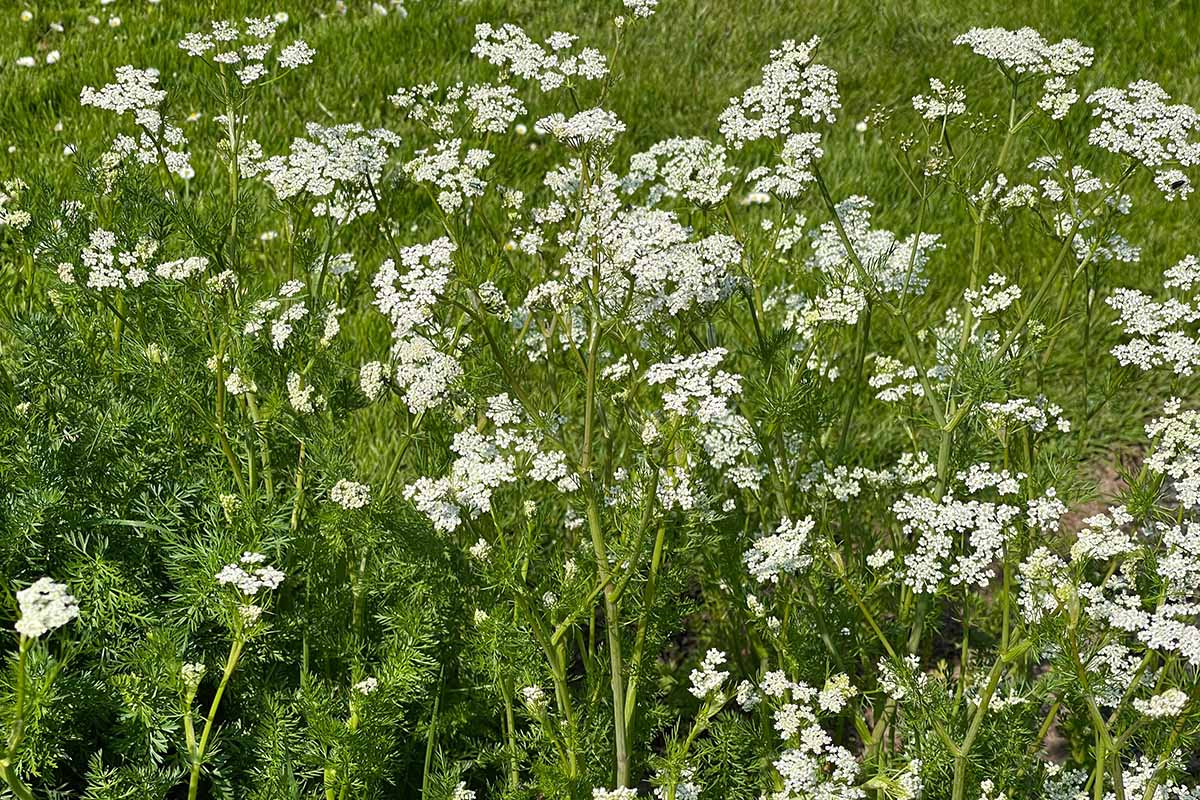
Wait about six to eight weeks after sowing, when plants are close to flowering to use the leaves. Once the plant directs more energy toward fruit production, the leaves can become bitter.
Resist plucking or pulling! Carefully snip off the leaves with shears to avoid damaging the whole plant.
To capture the most flavor and best texture of anise leaves, plan for immediate use after picking. Add leaves to dishes within the last few minutes when cooking.
Dried leaves have a few applications, and they’re easy to prep. More on that later.
Now Let’s Talk About Seeds
Anise plants need about 100 days to reach maturity, so the best time to harvest seeds is late in the season.
Timing can be tricky and will depend on your growing zone and current conditions, but will typically fall between August and September.

The fruits, or seeds, will begin to show themselves as the plant matures and the white flower petals fall away. The ripe, oval-shaped fruits are about three to five millimeters long and grayish-green in color.
You can allow plants to dry while they’re still in the ground, but you risk losing seeds as they’ll likely drop into the soil, lost forever into the abyss.
It’s best to cut the whole umbel, or flower head, off. Then place on a tray, a cookie sheet, or in a paper bag – something to catch seeds if they fall while drying.
Leave umbels intact like this in a clean, dry, well-ventilated space for a week or so. Seeds will naturally fall off. If any stubborn seeds remain attached, gently shake or tap to coax them out.
Preserving and Storing
You probably aren’t planning to use all of your seeds right away, so you’ll want to preserve and store them to make them last.
As with other seeds and herbs, there are different methods for success. This is my suggestion, and you can modify it to work best for you.
Aniseed can be used whole or ground, depending on the recipe. Just keep in mind that ground anise loses its aroma and flavor much faster than whole seeds, so don’t grind until you’re ready to use them.
Store the seeds in an airtight jar, tucked away in a dark spot. A shelf in your pantry or cupboard is perfect!
Label your jar with the storage date. They’ll last for about a year like this, which is perfect timing to replace with next year’s harvest.
If you want to try saving leaves for later, after clipping, lay them on a screen in a cool, dry, dark, and airy place. After about a week, the leaves should be dry.
If they crumble easily when you pinch them, they’re ready to store. Place them in an airtight jar just like you would with seeds.
Flavor Profile
An organic compound called anethole gives anise its sweet, aromatic licorice flavor.
P. anisum steals the show in pastries and other baked goods, and it enjoys the spotlight in various liqueurs like ouzo and sambuca.
When used sparingly, it also pairs well with seafood and meat. In fact, it’s a common ingredient in Italian sausages and Indian curries.
The warm flavor profile of anise matches brilliantly with other spices like clove and cinnamon. And sugar is its BFF, making it a delicious complement to fruit and chocolate.
Cooking with Anise
Add chopped fresh leaves to green salads and fruit salads, or use them as a tasty, colorful garnish.
Use whole or chopped fresh leaves, or crushed, dried leaves in baked goods, pickles, curries, eggs, or soups.
Seeds boost the sweetness in pastries, cakes, and cookies. Add them to sweet rolls and gourmet breads.
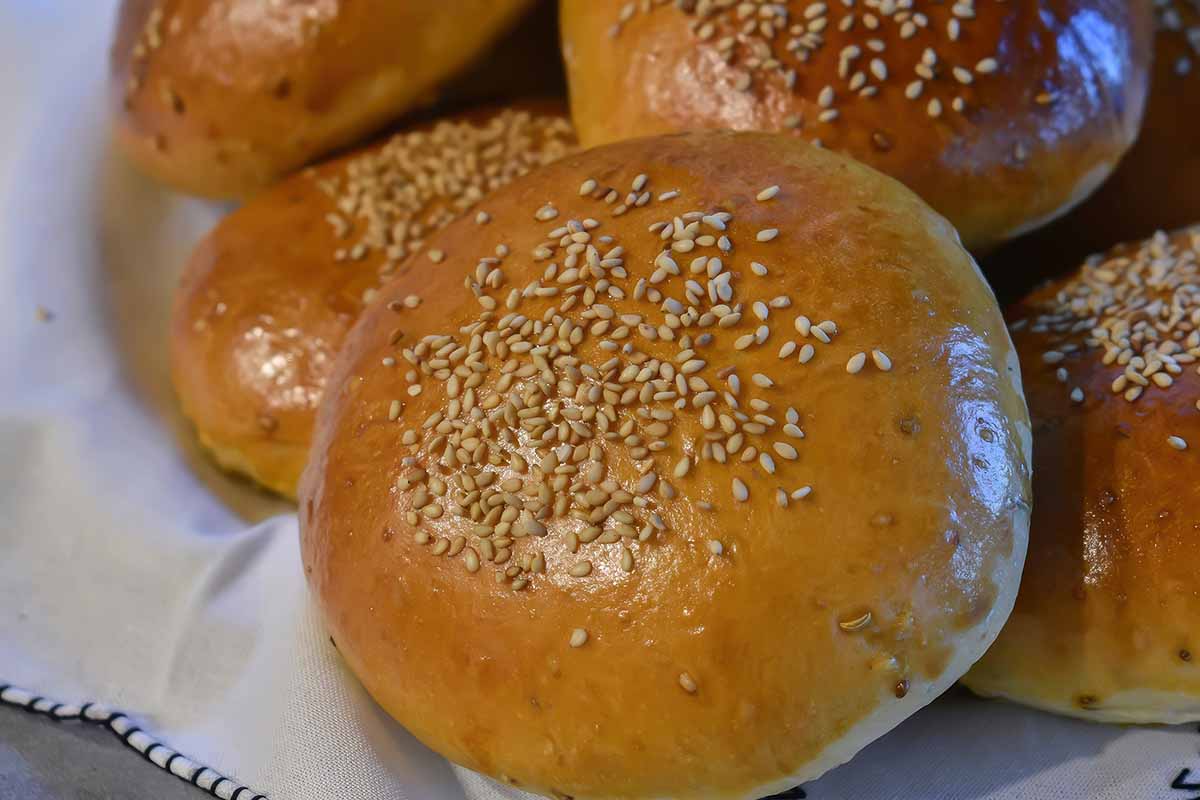
Whole anise seeds release a new layer of complexity onto a dish.
When chewed, they add a burst of fresh licorice flavor. In fact, in some cultures, they’re used as a palate cleanser or breath freshener at the end of a meal.
Crushed, toasted seeds enhance flavor when tossed with fresh fruit desserts and gourmet salads. Try lightly toasting seeds in a dry skillet to make their flavor pop!
Hint: toasting also makes whole seeds easier to crush and grind.
The oil from aniseed is extracted via a steam distilling process. Sometimes using liquid is preferred over the seed to avoid an undesirable appearance or texture in finished edible products. A few examples are ice cream, chewing gum, and liqueurs.
Remember that oil is stronger than extract. Oil is typically reserved for commercial cooking.
For home cooking, aniseed extract might be a better choice, but it can be difficult to find. You may come across it in your local specialty food market.
Some people use essential oils for cooking. If you want to try it, please remember that it’s highly concentrated, so use with caution!
Recipe Ideas
Speaking of sweets, who can resist yummy biscotti with a steaming cup of strong coffee? Not me!
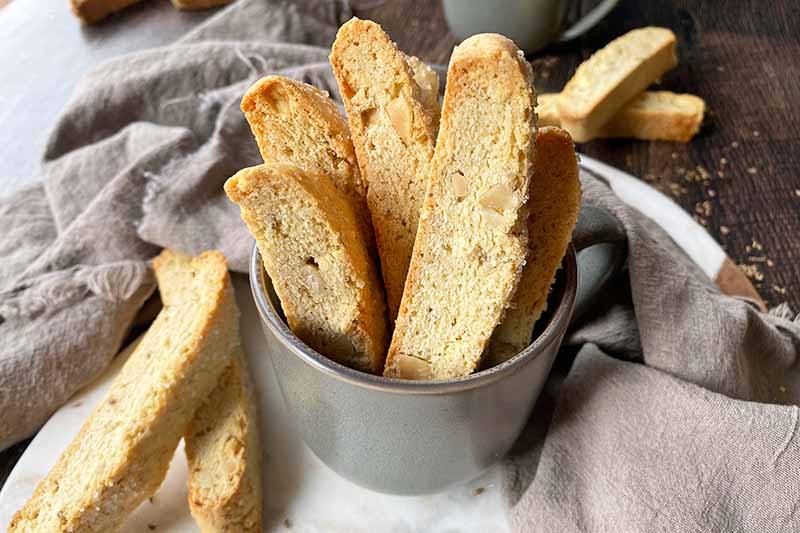
Try this anise biscotti recipe from our sister site, Foodal.
Meat rubs are a no-fuss way to experiment with this herb. Traditional blends like Egyptian dukkah and Indian garam masala incorporate anise to build layers of flavor.
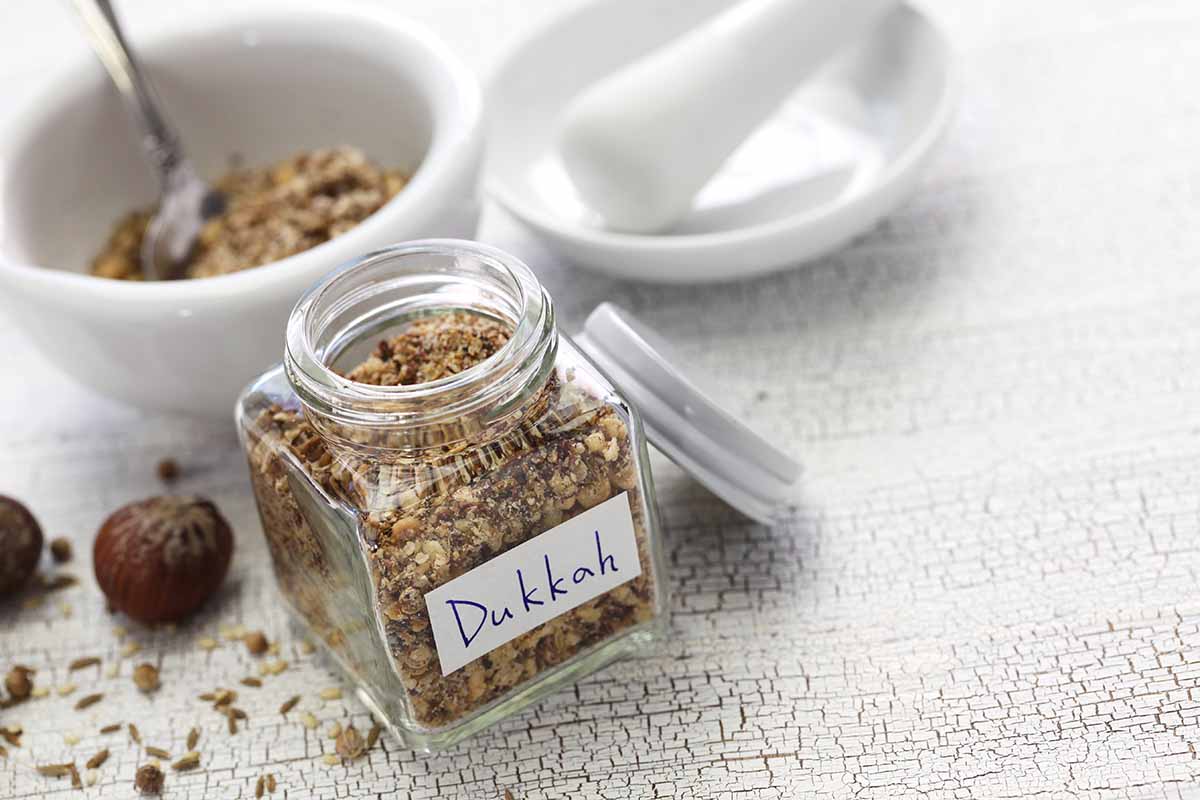
I like to keep things simple with my own no-fail recipe that I’ve been using for years. You can use this rub with your favorite protein – beef, pork, lamb, or fish. You choose!
Tabitha’s Meat Rub:
- 1 tablespoon anise seeds
- 1-2 teaspoons black peppercorns (adjust to your own taste)
- 1-2 teaspoons salt (adjust to your own taste)
- 1 teaspoon demerara or turbinado sugar (optional)
- 3-4 tablespoons extra virgin olive oil
Coarsely grind the seeds and peppercorns in a coffee bean or spice grinder. Mix with salt, sugar, and oil. Brush on meat.
If you don’t mind the mess, massage into the meat with your hands. Grill. Simple!
Anise also makes a terrific substitute in recipes that call for fennel. Try it in this Mediterranean sheet pan dinner recipe from Foodal.
Just swap in aniseed for the fennel seed. It’s quick and easy for a weeknight family meal.
Use leaves to brew a soothing cup of hot tea. Place a spoonful of dried, crushed anise leaves into a cup or infuser, add hot water, and steep for a few minutes. Strain the leaves if desired and enjoy.
An Ancient Culinary Powerhouse
Now you know all my culinary secrets about anise, including where to buy, how to harvest and preserve, different ways to use the seeds and leaves, and some recipe ideas.

Please try my rub recipe and let me know your thoughts. I’d love to try your ideas too. Let’s swap recipes in the comments section below!
To learn more about anise, take a look at these guides next:
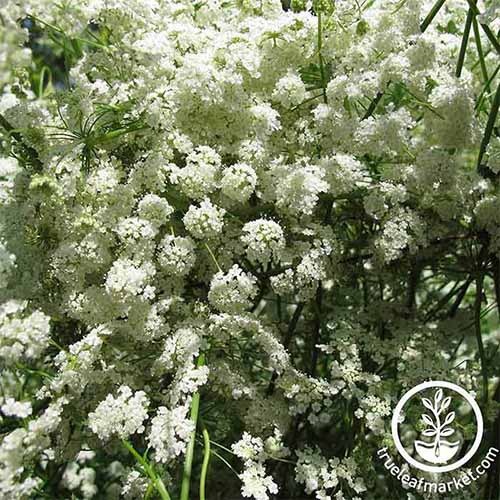
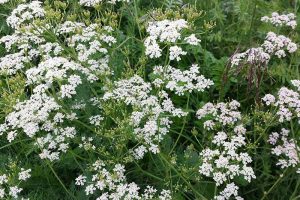


I think I see one aniseed on this bun (lower right) in the above image, but the majority are sesame seeds.
Sorry to be nitpicking, love the rest of this article and this website. Just discovered this website and will sure be visiting more often in the future.
Love from NL, Claire
Hi Claire. Thanks for reading and glad you like the article and the website. No need to apologize. Your observation is correct – good eye! This Moroccan sweet roll, called Krachel, is hiding the anise seeds inside. Traditionally, the anise is kneaded into the dough. The sesame seeds are added on top as a garnish. I should have posted a photo with the bun cut or torn in half to show the anise seeds. Thanks for pointing this out! And if you want to try baking this delicious roll, search up a Krachel recipe and let us know how you… Read more »